
Facebook Twitter Instagram YouTube RSS Feed
Written on: March 24th, 2023 in Outreach, Wetland Animals
By Olivia Allread, DNREC’s Wetland Monitoring and Assessment Program
Ah, the start of spring. We all have our own personal odes to season. Many of us wait for that 70-degree day, some prepare gardens for planting, while others set the date to do that annual “cleaning” and get the dust off their ceiling fan blades. For us, one of the most indicative signs warmer days are approaching are the sounds and sightings of frogs.
These amphibians live in habitats across the United States and are clocking in at about 6,000 known species worldwide. As we all probably know, frogs go through metamorphosis transforming from tadpole larva into an adult frog – quite the astonishing biological process. It’s even referenced in their group name, amphibian, coming from the Greek work amphibios meaning “double life”, as they live part of their lives on land and part of it in water. According to Jim White, Senior Fellow for Land and Biodiversity at Delaware Nature Society, one or more of Delmarva’s 18 frog species may be found in almost every natural terrestrial and freshwater habitat in the state. Let’s take a closer look at 5 frogs coming to a wetland near you this spring.
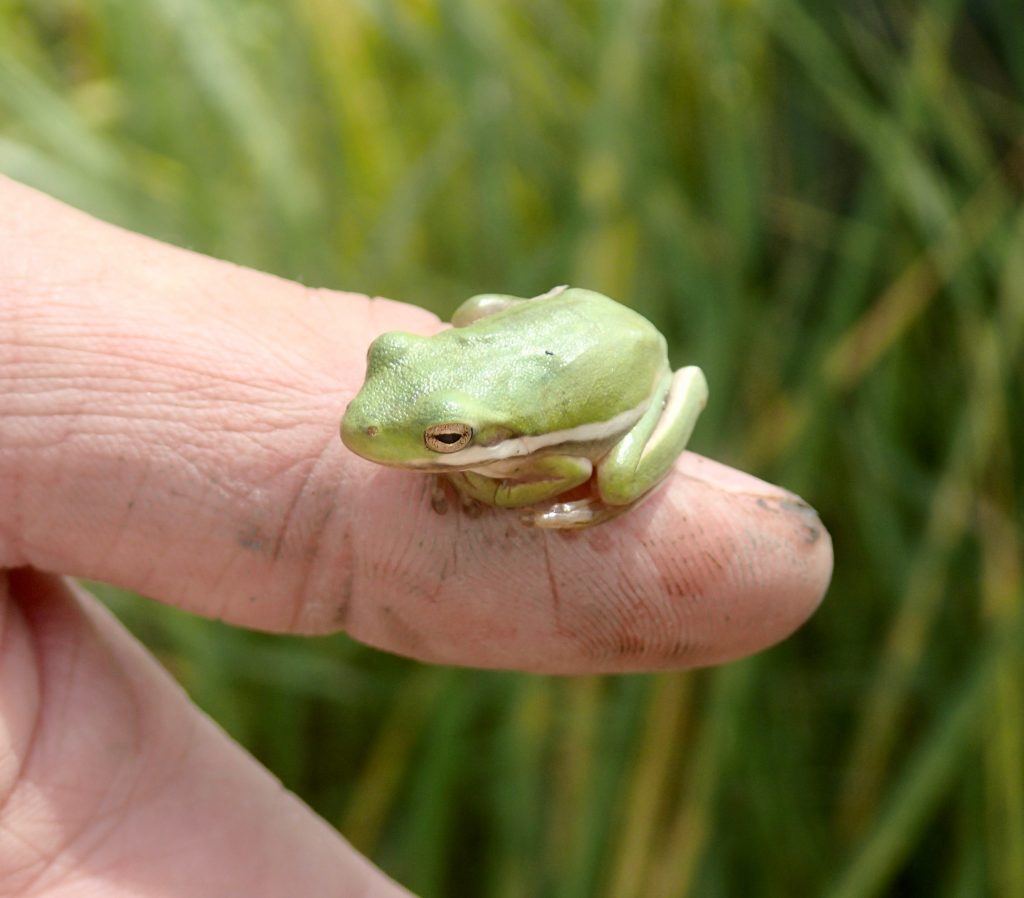
Green Treefrog (Hyla cinerea)
As an easily identifiable species, this frog ranges from bright green to dull green with a white stripe down its side. They prefer to live in marshes, swamps, small ponds and streams with lots of floating vegetation and grasses. Feeding mostly on small insects and invertebrates, green tree frogs are most active at night. Two unique features are its sticky toe pads and that they can make 6 different calls.
Southern Leopard Frog (Lithobates sphenocephalus)
With a powerful jump, this species can be found further away from water or a wetland as it forages for food. This species especially likes freshwater wetlands abundant in insects, arthropods, and worms. Adult frogs have two prominent yellow or gold dorsolateral folds, or ridges, extending from behind their eyes to their hips. They may be considered smarter than your average frog, as their eggs can hatch earlier than normal if predators are nearby.
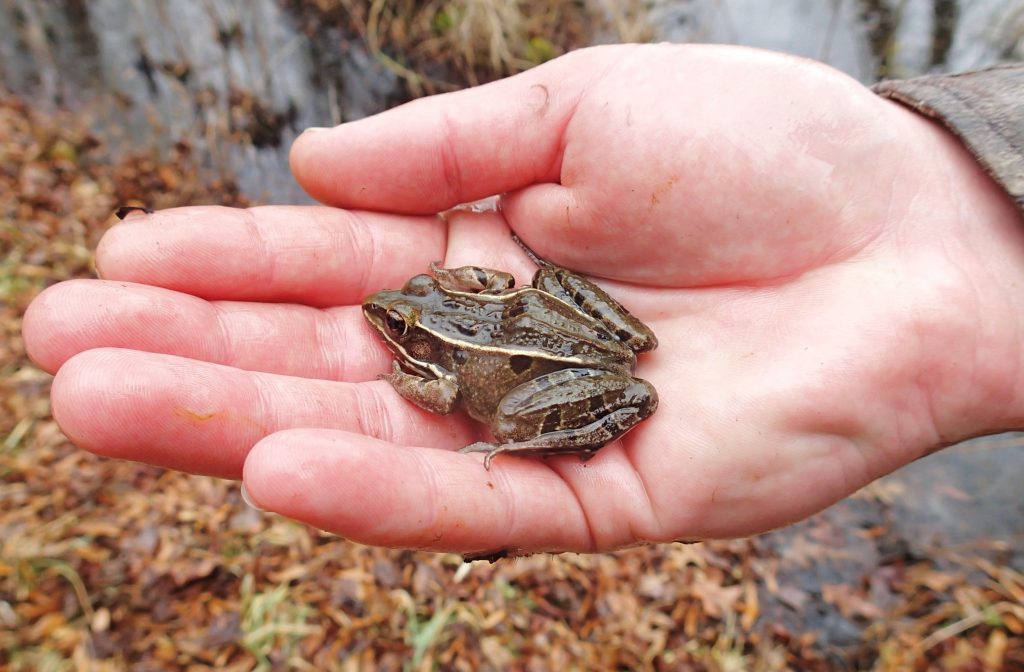
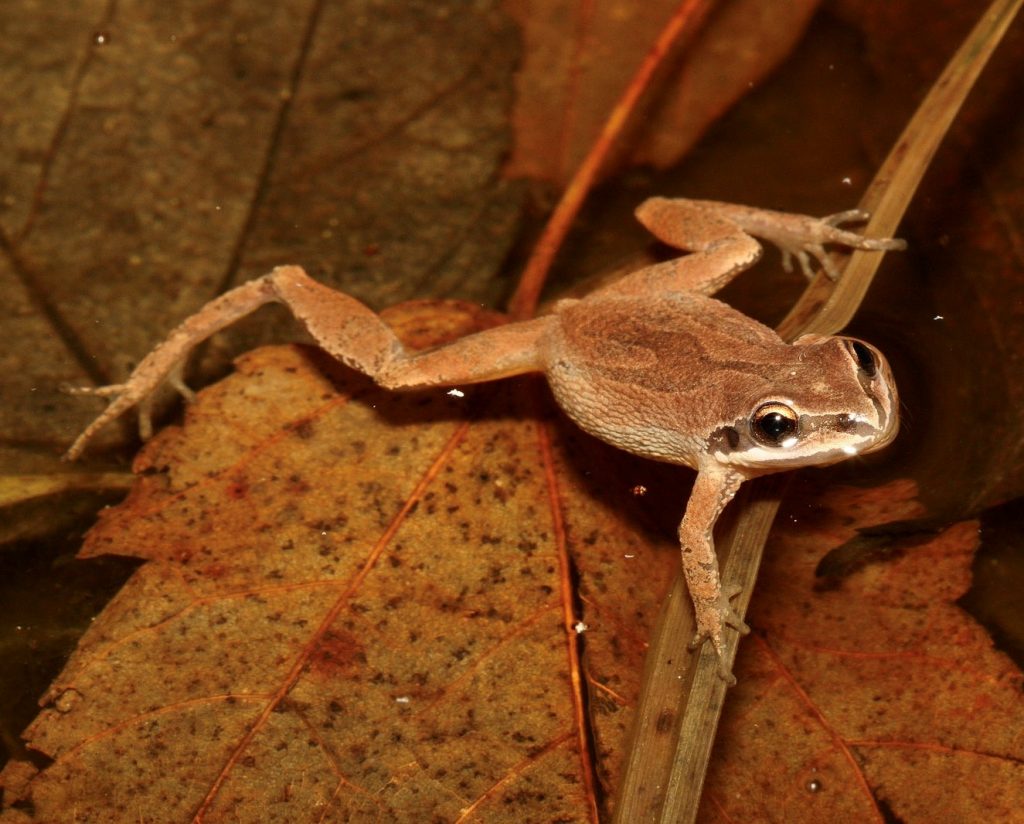
New Jersey Chorus Frog (Pseudacris kalmi)
Look through sedge clumps and grass in shallow, wet areas to spot this species. New Jersey chorus frogs enjoy herbaceous vegetation in ponds and moist woodlands, using freshwater wetlands as breeding locations. Usually recognized by their linked lines in the shape of a triangle between the eyes. Their call can be heard day or night, and is similar to the sound produced by running your finger over the teeth of a comb.
American Bullfrog (Lithobates catesbeianus)
Ranking as the largest of the North American frogs, this species can weigh up to 1.5 pounds and reach almost 7 inches in length. They enjoy freshwater ponds, streams, and marshes with shoreline vegetation for habitat, and will primarily hunt at night. With fully webbed hind feet, bullfrogs can swim well and jump far. Not only are they athletes, but their call can be heard up to a half mile from their location.
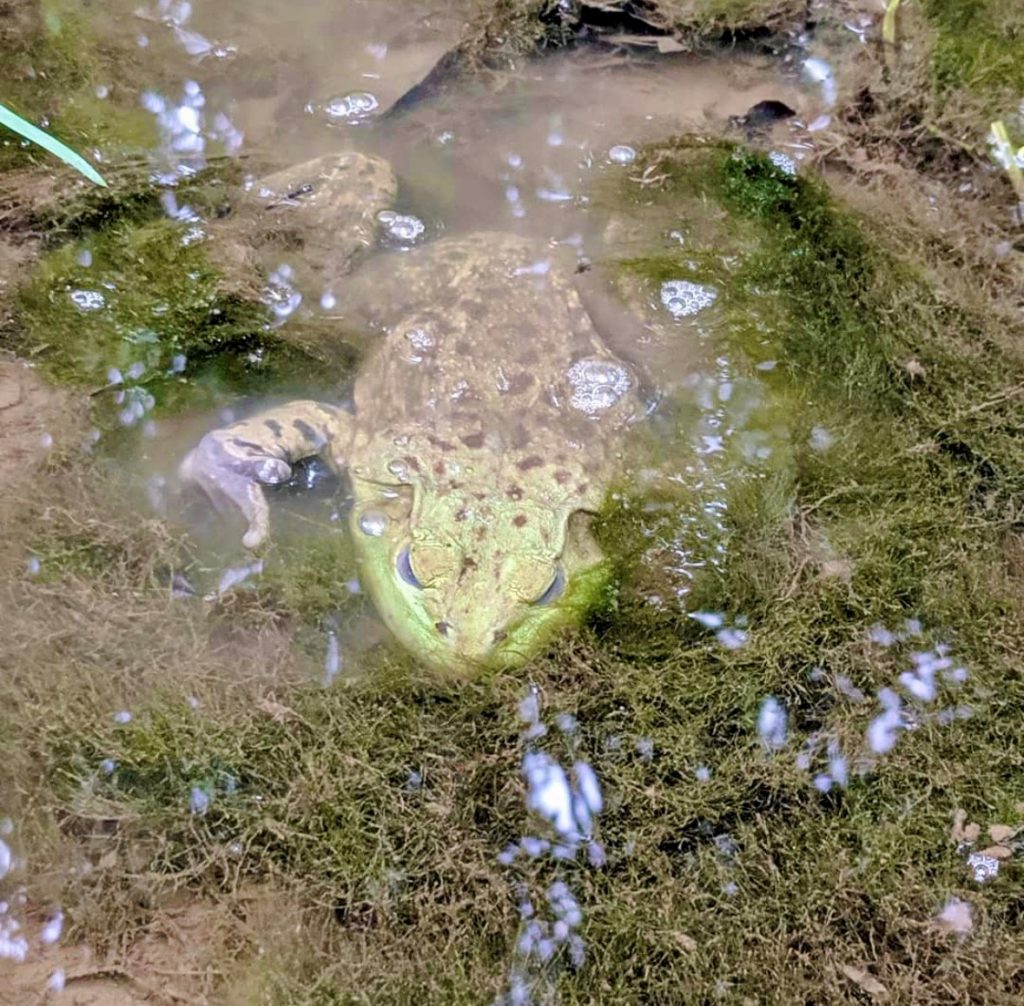
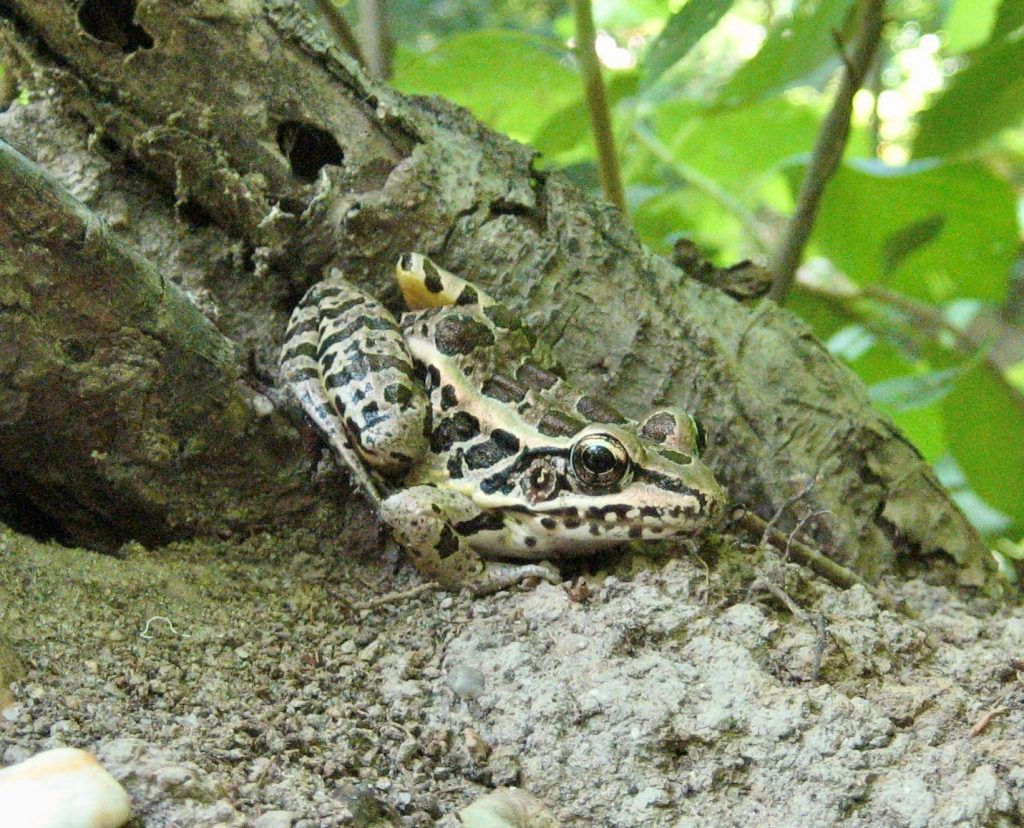
Pickerel Frog (Lithobates palustris)
Often confused with the northern and southern leopard frog, this species has two distinct parallel rows of spots down its back. These vivid amphibians occur in a variety of freshwater aquatic and wetland habitats, like fens and forested streams. As a defense mechanism, they produce a toxic substance from their skin which makes them unappealing to most predators.
As with all things in the circle of life, frogs are an essential dweller of functioning aquatic, wetland, and riparian ecosystems. Tadpoles graze on algae, adults can devour thousands of insects annually, including those carrying diseases or sicknesses. Being both predator and prey, they serve a purpose for many species across the food chain, as well as many species across varying habitats. And the sound of calling frogs can be quite soothing at night. Becoming a frog enthusiast doesn’t require a college degree; if you’re a patient listener who enjoys the outdoors, these species can be heard and seen in action this spring.
You can attract amphibians to your yard by creating a habitat and supporting biodiversity. Build a pond, support your backyard marsh, plant native species – make a difference by letting frogs and amphibians thrive.